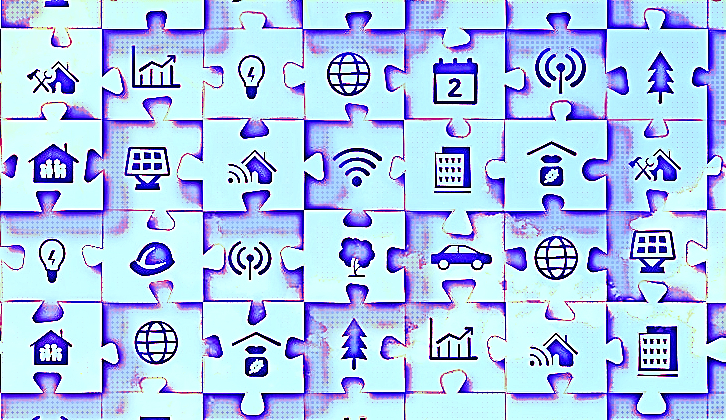Weaving Influence is a full-service digital marketing agency. Since launching 10 years ago, Weaving Influence has helped clients launch more than 150 books, carving its niche in working with authors, thought leaders, coaches, consultants, trainers, nonprofit leaders and speakers to market their services and books. This post is by Anna Tavis and Stela Lupushor.
Since 2020, the ways people work, how they relate to work and how they relate to each other at work have shifted. Boundaryless work can have a detrimental impact on our well-being, and HR departments are grappling with side effects such as burnout, disengagement, resignations and a shift in power dynamics between the workers and organizations.
Highly skilled workers are in high demand and choose companies not only based on rewards (which are going up across the board) but also on other aspects of the employment value proposition.
Focusing on retention alone is a lost game. We need to think differently about work, examine all the elements comprising the puzzle of work and break these down in a way that allows us to reassemble and reframe work in meaningful ways.
We describe these elements through the idea of (4+3) Ws, which represents four core elements (work, workforce, workplace and worth) and three enabling elements (worker journey, work experience design and worktech).
Below, we discuss each of those seven elements in brief.
Reframe work
Transition away from the job description. Instead, define the essence of work to be done and its characteristics. These include time dimension (time zone-specific, shift work, seasonal etc.), the degree of technological enablement (fully automated, mechanized, augmented by technology etc.), degree of collaboration required (can be done alone, might be done via crowd work, etc.) and remuneration practices (salary, in-kind, reputational value, etc.).
Based on the mix of these characteristics, we can then identify the most optimal “worker mix,” or workforce, to do the work.
Reframe workforce
Consider new combinations of elements such as:
- Worker types (individual workers, contingent workers, teams, networks, digital workers and so on)
- Ways of engaging and sourcing (direct contracts, temp hire, build skills over time, retain, hire entire teams, etc.)
- Diverse abilities of workers (traits, characteristics, circumstances that might create different needs and wants of the worker)
- The meta-identity of the worker, representing the whole person and everything they bring to work — professional and personal experiences, capabilities, relationships, communities and reputation
This approach widens the choices of workers and brings much-needed flexibility by tapping into overlooked talent pools or engaging them in new ways. Based on the optimal mix of work and workforce, then the workplace can be designed.
Reframe workplace
Rethink workplace as a combination of the following:
- Workspace: This is where the work gets done and is designed to seamlessly integrate both the physical and digital work environments
- Work context: This encompasses the management system, rules and norms guiding organizational culture and operations
- Worktech: This covers the enabling technologies.
Another layer of complexity gets added by the value exchange, or what we refer to as worth.
Reframe worth
Recognize a more complex set of motives and drivers for employee engagement, and find ways to diversify your approach to rewards. Workplace experience, social bonds, personal and professional growth, decision autonomy and brand affiliation serve as powerful portfolio employment values.
Figuring out how to personalize and deliver individualized value to the workforce will be the key challenge for 21st-century organizations.
To reframe the constructs above, there are three enabling solutions: worker employment journey, work experience design and worktech.
Worker Employment Journey
This includes all stages of the relationship between the worker and the organization – from discovery through hiring, growth and development, exit and even returning as a rehire. When entertaining efforts to transform, it is important to look at the experience from the worker’s perspective and not through HR processes or systems lenses.
Work Experience Design
This is the use of human-centered design principles to change how work is structured, how the workflow is sequenced, how the team functions, how the individual is enabled to do the work and grow. All of this is with the intent to maximize success for the individual and the organization.
Worktech
This includes devices, systems and the application of social science to improve or expand human ability and enhance interactions in the workplace. Worktech is different from HR technology, which primarily focuses on the improvement of HR processes.
If you’re an organization that wants to reframe work and thrive in the future, you need to reimagine the interplay of the (4+3) Ws and discover how they operate and create value.
Anna Tavis, Ph.D., is academic director, human capital programs, at the NYU School of Professional Studies. Stela Lupushor is the founder of Reframe.Work Inc., a faculty member at New York University and a workplace futurist.
To learn more about ways to create an inclusive workplace experience, pre-order the forthcoming book from Travis and Lupusor, “Humans At Work: The Art and Practice of Creating the Hybrid Workplace.”
If you liked this article, sign up for Business Transformation SmartBrief. It’s among SmartBrief’s more than 250 industry-focused newsletters.
